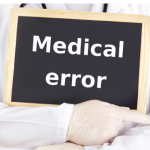Practice Makes Perfect
Much like any other skill in medicine, learning to recognize and minimize cognitive errors takes practice. Invariably, the first step entails acknowledging one’s vulnerability to cognitive biases. Next steps involve being aware of 1) the situations in which cognitive errors are most likely to occur and 2) the types of biases to which you, as an individual, are most prone. Then we must develop and practice debiasing strategies, which should be shared with trainees as we role model mitigating our own biases.
In Sum
By admitting our susceptibility to bias, practicing cognitive forcing techniques, being introspective when we are especially predisposed to making cognitive errors and teaching our trainees to engage us daily in conversations about biases, we can learn to identify biases in real time, providing the opportunity to compensate for those biases and avoid a misdiagnosis. Mastering cognitive errors provides us the opportunity to become the master diagnosticians we all strive to be.
 Megan Milne, MD, is currently is a second-year rheumatology fellow at Duke University, Durham, N.C. She completed her medical education at the University of Pittsburgh School of Medicine and her internal medicine residency training at University of Texas Southwestern Medical Center, Dallas.
Megan Milne, MD, is currently is a second-year rheumatology fellow at Duke University, Durham, N.C. She completed her medical education at the University of Pittsburgh School of Medicine and her internal medicine residency training at University of Texas Southwestern Medical Center, Dallas.
 Rebecca E. Sadun, MD, PhD, is an adult and pediatric rheumatologist at Duke University School of Medicine, Durham, N.C., with an interest in how cognitive biases impact diagnostic reasoning in rheumatology.
Rebecca E. Sadun, MD, PhD, is an adult and pediatric rheumatologist at Duke University School of Medicine, Durham, N.C., with an interest in how cognitive biases impact diagnostic reasoning in rheumatology.
References
- Institute of Medicine (US) Committee on Quality of Health Care in America. To err is human: Building a safer health system. Kohn LT, Corrigan JM, Donaldson MS, editors. Washington, D.C.: National Academies Press; 2000.
- Graber ML, Franklin N, Gordon R. Diagnostic error in internal medicine. Arch Intern Med. 2005 Jul;165(13):1493–1499.
- Klaczynski PA. Analytic and heuristic processing influences on adolescent reasoning and decision-making. Child Dev. 2001 May–Jun;72(3):844–861.
- Croskerry P. Adaptive expertise in medical decision making. Med Teach. 2018 Aug;40(8):803–808.
- Reason J. Human error: Models and management. BMJ. 2000 Mar 18;
320(7237):768–770.
- Reilly JB, Ogdie AR, Von Feldt JM, Myers JS. Teaching about how doctors think: A longitudinal curriculum in cognitive bias and diagnostic error for residents. BMJ Qual Saf. 2013 Dec;22(12):1044–1050.
- Logan AA, Rao M, Cornia PB, et al. Virtual interactive case-based education (VICE): A conference for deliberate practice of diagnostic reasoning. MedEdPORTAL. 2021 May 19;17:11159.
- Liu NH, Daumit GL, Dua T, et al. Excess mortality in persons with severe mental disorders: A multilevel intervention framework and priorities for clinical practice, policy and research agendas. World Psychiatry. 2017 Feb;16(1):30–40.
- Walker ER, McGee RE, Druss BG. Mortality in mental disorders and global disease burden implications: A systematic review and meta-analysis. JAMA Psychiatry. 2015 Apr;72(4):334–341.
- Correll CU, Solmi M, Veronese N, et al. Prevalence, incidence and mortality from cardiovascular disease in patients with pooled and specific severe mental illness: A large-scale meta-analysis of 3,211,768 patients and 113,383,368 controls World Psychiatry. 2017 Jun;16(2):163–180.
- Croskerry P. Cognitive forcing strategies in clinical decisionmaking. Ann Emerg Med. 2003 Jan;41(1):110–120.
- Croskerry P. Achieving quality in clinical decision making: Cognitive strategies and detection of bias. Acad Emerg Med. 2002 Nov;9(11):1184–204.
- Medina MS, Castleberry AN, Persky AM. Strategies for improving learner metacognition in health professional education. Am J Pharm Educ. 2017 May;81(4):78.
- Gordon DC, Kemnitz M. Cognitive errors in emergency medicine. Crit Dec Emerg Med. 2013;27(12):11–18.


